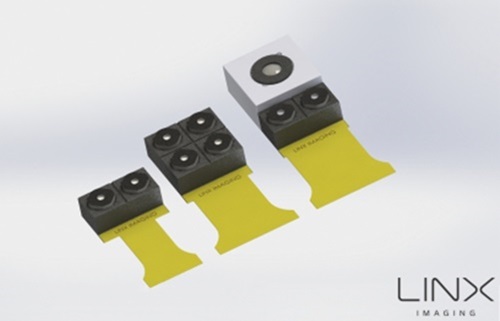As major Smartphone businesses such as Apple and Samsung Electronics chose dual-camera as their next-generation technologies, there is a lot of stir in relevant downstream industries.
There is a lot of stir because there is an increased demand for not just camera modules, but relevant materials and parts such as lenses, AF actuators, and filters, and mobile D Ram and semiconductors. It is expected that relevant market will grow even bigger from now on because even lesser Smartphone businesses such as China and others are starting to secure dual-camera technologies.
Apple bough Israeli business called Linx Computational Imaging for 20 million dollars last April. This company has special sensor and image processor technologies, which is why Apple chose to buy this company to secure dual-camera technologies according to experts’ analysis. Multi-aperture imaging combination technology is needed to raise dual-camera’s performance.
Samsung Electronics also focused on dual-camera as its next-generation technology. Processor that can process dual-image signal was built in for the first time on newly released ‘Exynos7420’, and this can be seen as a prior plan to install dual-camera functions hereafter.
Dual-camera can decrease Smartphone camera’s projected part and implement thin and sleek design. Just like human’s eyes, two cameras can revise errors in color sense to increase color precision, and this can produce more clear images.

Unlike previous Smartphone camera modules that save image data such as subject and surrounding’s color, brightness, and depth, dual-camera work as multi-sensor system that has each camera work on its own function. One of the camera focuses on a subject, and the other camera records the background. It can implement resolution and focus just like a DSLR camera’s level.
It can obtain good images even under a poor condition and it can also implement 3D images. If dual-camera is applied onto a Smartphone, it can implement not just 3D images but it can utilize many applications such as augmented reality and others. If image quality is improved by dual-camera, face and body awareness technologies’ levels will be increased as well.
“Picture quality depends on the amount of light that gathers on image sensor through lenses. Theoretically quality has to be better about two times more since there are two times more of lenses and image sensors.” One expert in this business said that the quality will get better with dual-camera.
Camera module businesses will receive most benefits if dual-camera market expands. Modules will increase by 2 folds per Smartphone, and demands for lenses and CMOS Image Sensors (CIS) will also increase accordingly. Mobile D Ram markets are also being positive about the effects that dual-camera will bring. Usually Smartphones that use 16 million-pixel camera modules usually use 3GB mobile D Ram, and Smartphones that use 8 million-pixel camera modules use 1~2 GB products. If dual-camera is applied, 4GB mobile D Ram will be applied on 16 million-pixel camera modules, and 2~3 GB products will be used on 8 million-pixel products.
High-pixel camera module manufacturers such as Samsung Electro-Mechanis and LG Innotech, lenses manufacturers such as Haesung Optics and Sekonix, AF actuator businesses such as Jahwa Electronics will receive a lot of benefits if dual-camera is applied.
Staff Reporter Lee, Hyungsoo | gold lion2@etnews.com